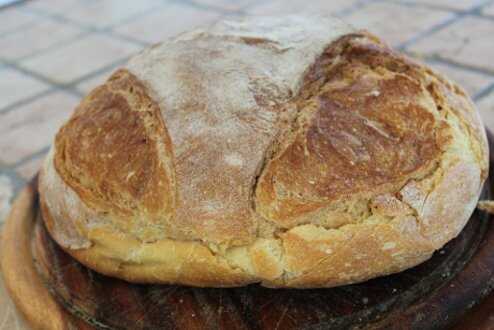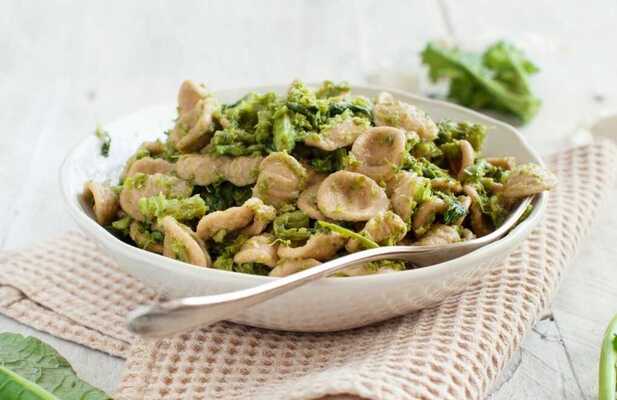Apulian burrata
Among the various dairy specialties that undoubtedly contribute to making the name of Puglia important and famous in Italy and abroad, we find a true classic of this southern region, namely the Apulian burrata. Although it is also produced in nearby Basilicata, it can be assumed that the best-known burrata is that of Andria. Here, burrata has also obtained the protected geographical indication (IGP), which is accompanied by other variants both from the Murgia and from other areas of Puglia.

Its name might make you think of butter, however, we must not be misled in this sense: the Apulian burrata is obtained from cow’s milk, and is characterized by its decidedly softer consistency and also characterized by a stringy component. It is therefore the soft nature that is recalled through the name of this cheese. Inside the burrata itself we find the equally famous stracciatella, made up of shredded mozzarella and fresh artisanal cream, while the external casing is made up of stretched curd. This cheese is also characterized by its appearance which resembles a bag, considering how there is a knot to enclose all this goodness.
The origins of Apulian burrata
One might think that the origin of this Apulian specialty is to be found in a very distant past: instead, burrata was born in 1956. That year was marked by extraordinary snowfalls in the Murge, and precisely in the area between Andria and Castel del Monte, Lorenzo Bianchino, active at that time at the Piana Padula farm, had a brilliant intuition. With the snowy streets, the latter decided to replicate what was done with manteche, another famous cheese, with burrata, that is, to store the stracciatella inside a sort of bag prepared with mozzarella paste. To prevent milk and its precious derivatives from being irremediably thrown away due to the city’s supply difficulties, Mr. Bianchino invented a new type of cheese, which then became famous in our country and therefore also in the rest of the world.
The preparation
This typical Apulian cheese is produced throughout the year, following artisanal preparation methods, which make it one of the most significant examples of the dairy art of this southern region.
- First, we proceed to raise the temperature of the raw milk up to 35-37 degrees.
- Subsequently, the same milk is left to ferment naturally with ad hoc ferments, or with citric or lactic acid. Fermentation ends when a pH between 6.1 and 6.2 is reached.
- At this point, the preparation proceeds through the coagulation process, through the use of rennet, which must take place in a few minutes.
- At this point, the curd is broken and the product obtained is left to rest so that the whey can drain.
- Then the stretching process takes over, using boiling (sometimes salted) water.
- After processing, the stretched curd must be frayed to be combined with the liquid cream, to prepare the stracciatella, which represents the heart of the burrata.
- A part of the spun paste is then used at this point to create the characteristic “bags”.
To enjoy this Apulian cheese in the best way, you will have to make sure the freshness of your burrata. In fact, it is not easy to find due to transport difficulties. A good pairing is represented by consumption with tomatoes, taking care to serve the burrata with a light drizzle of extra virgin olive oil. Another way to savor this Apulian specialty is certainly in delicate bruschetta, or savory pies, pasta dishes and rolls.

Altamura Bread
A bread created and designed to meet the needs of shepherds and farmers for whom it was an essential and daily food. In fact, they sometimes had to stay away from home for several days, in the farms, the typical farms that stood and still stand in the countryside around the city.

Apulian bombette: the recipe
The Apulian bombette are small meat rolls made with slices of capocollo (pork neck) rolled up on themselves, seasoned according to taste, skewered on the classic thin skewer and roasted. They are generally filled with pieces of Apulian canestrato cheese, salt, pepper and sometimes parsley.

Orecchiette with turnip greens
Orecchiette with turnip greens are one of the symbolic dishes of the Apulian gastronomic tradition, especially in the province of Bari but are prepared throughout the region.
